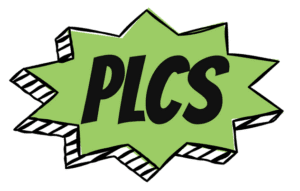Professional Learning Communities (PLCs) have become an integral part of many schools worldwide, fostering collaborative learning among teachers and enhancing the overall educational experience. This article explores the concept of PLCs, their importance in schools, and addresses frequently asked questions on the topic.

Understanding Professional Learning Communities
Professional Learning Communities are groups of educators who collaborate regularly to share expertise and work together to improve teaching skills and the academic performance of students. These communities are often marked by shared goals, collaborative teams, regular meetings, and a focus on student learning and assessment data.
Importance of Professional Learning Communities in Schools
PLCs play a crucial role in advancing a school’s teaching quality and students’ learning experiences:
- Collaborative Learning: PLCs foster a culture of collaboration among teachers, allowing them to learn from each other, share resources, and work together on solving common challenges.
- Continuous Improvement: They promote continuous professional development, enabling teachers to improve their teaching methods and stay updated with educational trends and research.
- Enhanced Student Outcomes: With a focus on student learning and use of assessment data, PLCs help teachers develop strategies to improve student performance.
- Shared Vision and Goals: PLCs help align the whole school around shared educational goals and visions, ensuring a coherent approach to teaching and learning.
- Increased Teacher Morale and Retention: By promoting supportive relationships among teachers, PLCs can improve teacher satisfaction and retention.
See more: Running an Effective Professional Learning Community – The Guide for PLC Facilitators
Frequently Asked Questions about PLCs
1. How is a Professional Learning Community formed?
A PLC is typically formed by a group of educators within a school who share a common goal or interest. This could be grade-level teachers, subject-specific teachers, or a mix of both. The school’s leadership often provides support in terms of time and resources for PLCs.
2. How often do PLCs meet?
The frequency of PLC meetings can vary based on the specific needs and schedules of the group. However, most PLCs meet regularly, often weekly or bi-weekly, to maintain the momentum of ongoing collaboration and learning.
3. What do PLCs discuss during their meetings?
PLCs discuss a variety of topics, all centered around student learning. This could include reviewing student assessment data, planning curriculum, sharing effective teaching strategies, discussing educational research, and working on shared challenges.
4. Can PLCs have a positive impact on students?
Yes, when effectively implemented, PLCs can significantly benefit students. They foster improved teaching methods and a more cohesive curriculum, leading to better learning outcomes for students.
5. Are PLCs only for teachers?
While PLCs primarily involve teachers, they can also include other school staff, such as administrators, guidance counselors, and librarians. The key is regular collaboration centered on improving student learning.
Conclusion
Professional Learning Communities serve as a powerful tool for fostering collaborative learning and continuous improvement among teachers. By understanding the concept and importance of PLCs, schools can harness their potential to create a more effective and enriching learning environment for both teachers and students.





